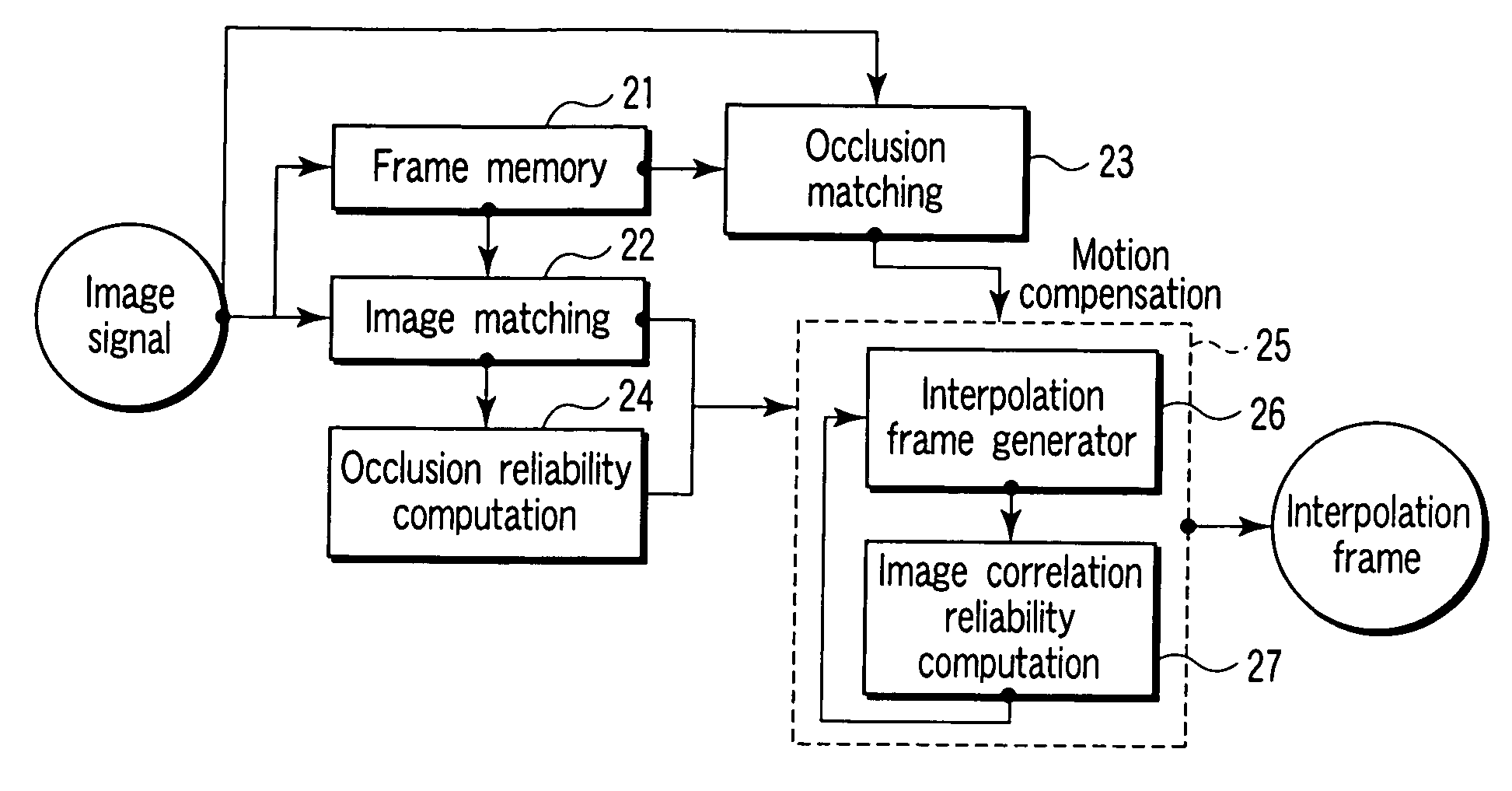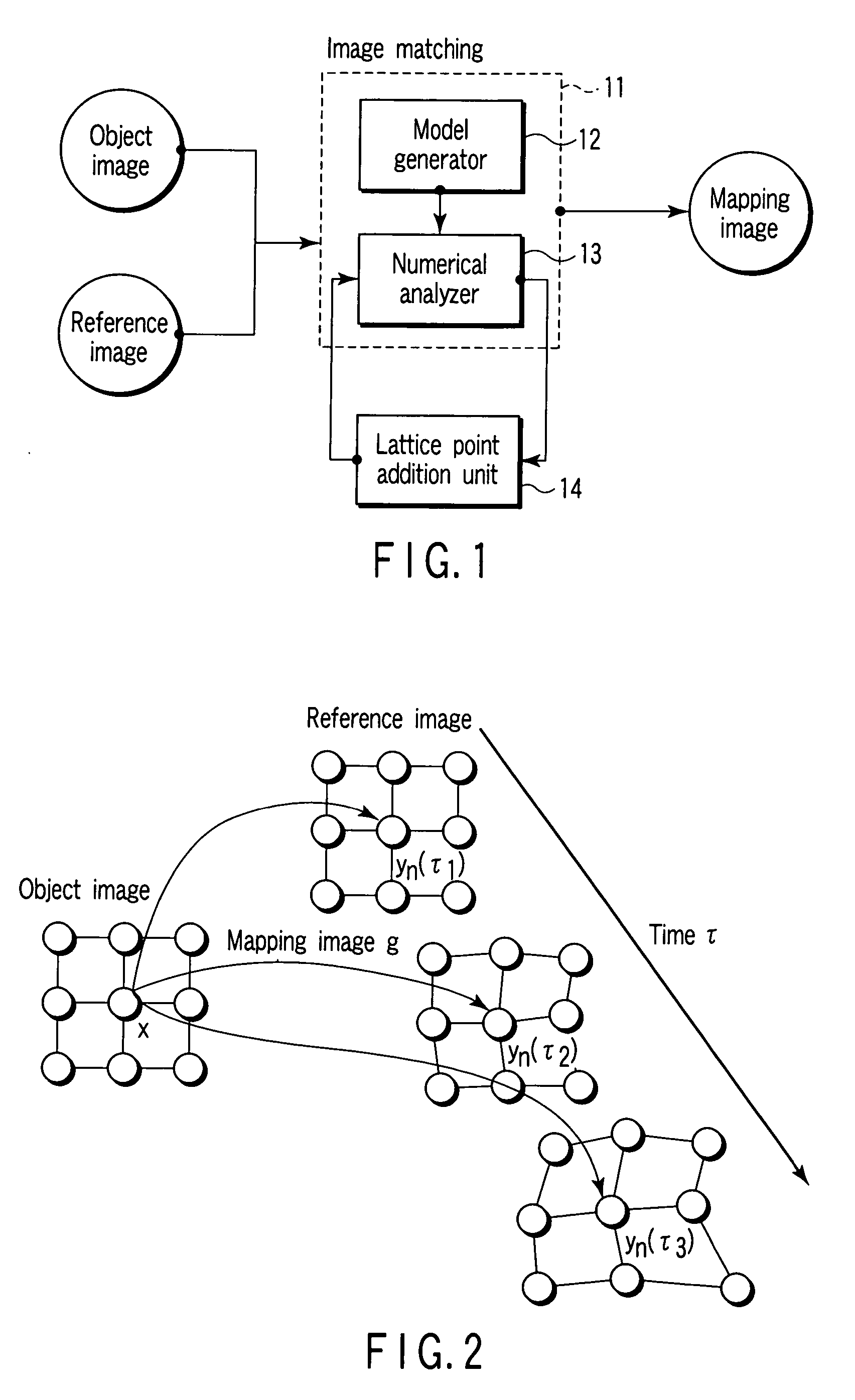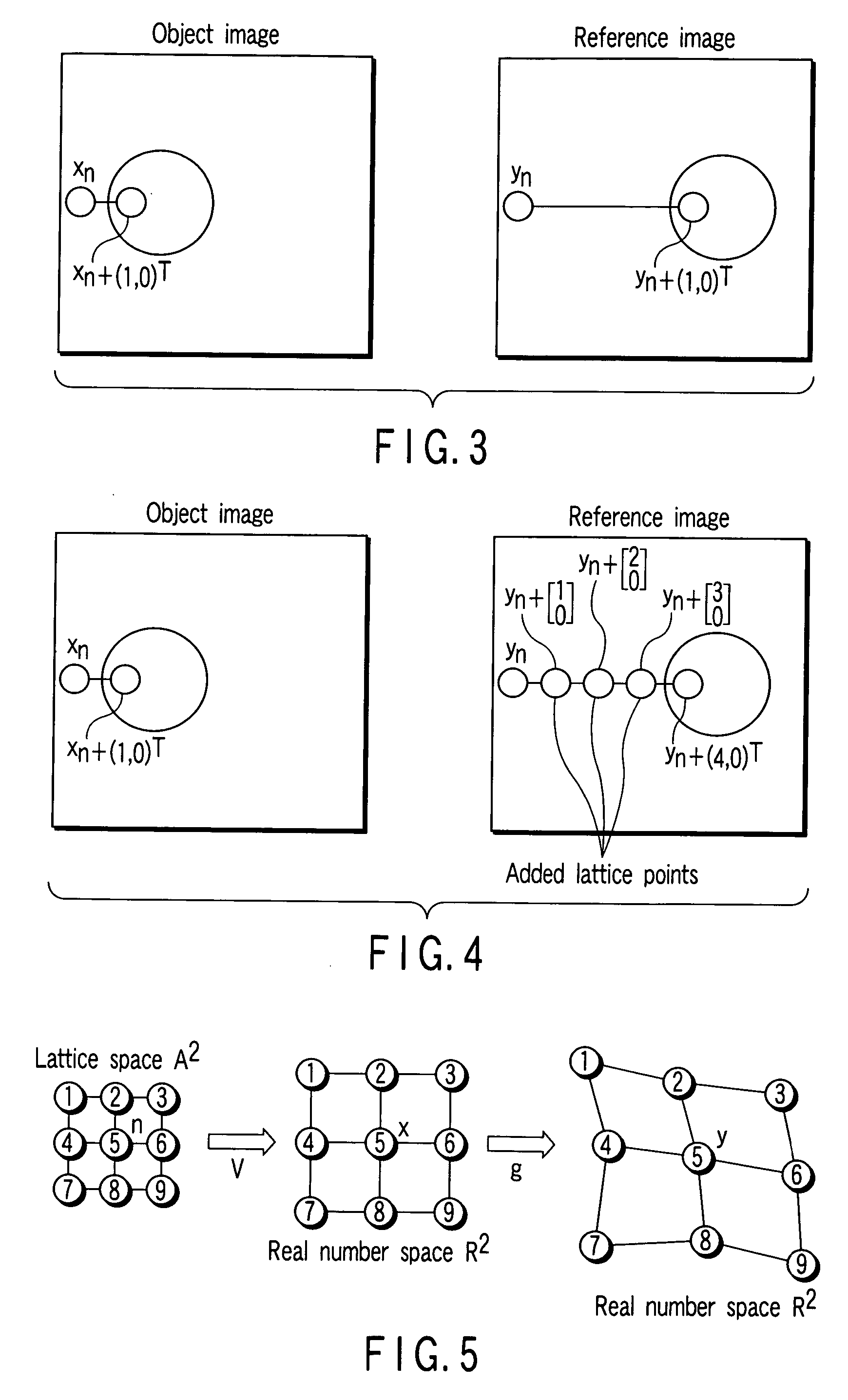Image matching method and image interpolation method using the same
- Summary
- Abstract
- Description
- Claims
- Application Information
AI Technical Summary
Benefits of technology
Problems solved by technology
Method used
Image
Examples
first embodiment
[0055] There will be described the present embodiment according to a block diagram of FIG. 1.
[0056] According to FIG. 1, an image matching unit 11 comprising a processor including a memory and so on comprises a model creation module 12 and a numerical analysis module 13. When a source image and a reference image are input to the image matching unit 11, the same parts of the object and reference images stored in a frame memory, for example, the same parts of 3D image are matched. In other words, when two images of the object and reference images are input, a dynamic model is created using dynamic concept. Because this dynamic model is output from the model creation module 12 in form of an ordinary differential equation, the numerical analysis module 13 solves the output repeatedly by a general numerical solution. The image of the result provided in the last of repeated computation becomes a final state of matching. In the present embodiment, a lattice point addition module 14 compri...
second embodiment
[0122] (Single Direction Occlusion Model)
[0123] The present embodiment is explained according to the block diagram of FIG. 13 and the flow chart FIG. 14. The present embodiment considers a problem how an interpolation is done for the purpose of making an occlusion region correspond to a motion image well, and is directed to generating an interpolation frame containing an occlusion area between frames of an image based on an image signal of a motion image.
[0124] When an interpolation frame is generated, there is an occlusion problem making it difficult to generate an interpolation frame of high quality. The present embodiment provides a method for generating an interpolation frame of high quality by interpolating an occlusion region adequately.
[0125] Schematically, this method performs an ordinal image matching (surface matching) in a time interval t1-t2, and an occlusion matching in a time interval t2-t3. A reliability of an occlusion region is obtained from a result of the ordin...
third embodiment
[0175] (Bidirectional Occlusion Model)
[0176] The present embodiment is explained according to the block diagram of FIG. 22 and the flow chart of FIG. 23. The present embodiment is directed to generating an interpolation frame between the frames of an image signal of a motion image.
[0177] When the interpolation frame is generated, it is difficult owing to occlusion problem to generate an interpolation frame of high quality. The second embodiment provides a method dealing with uncovered occlusion. The present embodiment can deal with covered occlusion as well as uncovered occlusion, by matching in bi-direction of forward and backward with respect to a time axis.
[0178] The image signal of the motion image is divided into frames, and subjected to processing. In this time, each frame is stored in a frame memory 31, and some frames can be accessed at the same time. A frame in the time t is referred to as a reference frame t, a frame in the time t+lΔt is referred to as a reference frame...
PUM
 Login to View More
Login to View More Abstract
Description
Claims
Application Information
 Login to View More
Login to View More - R&D
- Intellectual Property
- Life Sciences
- Materials
- Tech Scout
- Unparalleled Data Quality
- Higher Quality Content
- 60% Fewer Hallucinations
Browse by: Latest US Patents, China's latest patents, Technical Efficacy Thesaurus, Application Domain, Technology Topic, Popular Technical Reports.
© 2025 PatSnap. All rights reserved.Legal|Privacy policy|Modern Slavery Act Transparency Statement|Sitemap|About US| Contact US: help@patsnap.com



